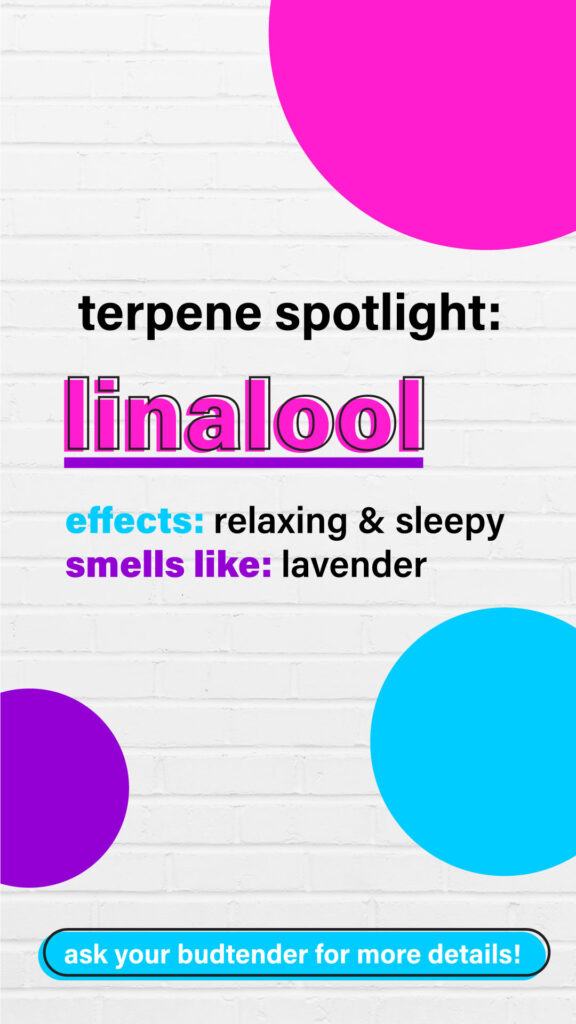
terpene spotlight: beta-caryophyllene
Welcome back to another edition of our terpene spotlight series. In each article of this series, we will explore a specific terpene and outline its effects and benefits within cannabis. To recap, terpenes are scented compounds that produce a unique taste and smell in plants like cannabis. They work together with cannabinoids like THC and CBD to maximize the benefits we can get from cannabis. We have learnt about limonene and linalool previously, and today we’ll be discussing beta-caryophyllene, a terpene that gives out a sweet aroma of clove with notes of wood.
What’s beta-caryophyllene?
Beta-caryophyllene, commonly known as caryophyllene, is one of the most well-known and well-researched terpenes in cannabis. This component is also present in the oils of numerous spices and food plants like black pepper, clove, oregano, and green vegetables. It can also be found in many essential oils and perfumes.
Beta-caryophyllene is the first known “dietary cannabinoid” that has GRAS (Generally Recognized as Safe) and is approved by the Food and Drug Administration (FDA) for food use. It can be used as a flavouring agent or adjuvant and coloring agent for food. It can also be used as an anti-inflammatory agent and used to suppress intestinal bacteria.
Aromas and flavours
Beta-caryophyllene is often described as having a spicy, peppery, and woody scent, with a hint of clove and cinnamon. When it comes to taste, beta-caryophyllene can give a warm and peppery sensation to the palate with a blend of slight sweetness or bitterness.
Benefits of beta-caryophyllene in cannabis
Potential therapeutic strategy
Beta-caryophyllene activates many of the benefits of the endocannabinoid system – A system that consists of cannabinoid receptor type 1 (CB1) and receptor type 2 (CB2) in our body. CB1 receptors are primarily responsible for the psycho-modulatory effects of cannabis, whereas CB2 receptors are powerful at treating inflammation, pain, atherosclerosis, and osteoporosis.
A 2008 research shows that beta-caryophyllene selectively binds to CB2 receptors in the human body, which makes it a functional agonist to treat inflammation, bodily pains, and muscle tension. This makes beta-caryophyllene a potential therapeutic strategy to improve metabolism and protect against neurodegeneration. Beta-caryophyllene may protect the brain and vascular system, improve stroke outcomes, prevent or help with Alzheimer’s disease and Parkinson’s disease, and provide many more benefits to our bodies.
Mood booster
Taking beta-caryophyllene may improve symptoms of mood disorders, and may reduce levels of depression and anxiety. Several studies found that Beta-caryophyllene has anti-cancer properties and antiproliferative effects, and the ability to prevent the spread of cancerous cells. Due to its powerful therapeutic properties, Beta-caryophyllene is considered by many as one of the most beneficial terpenes contained in cannabis.
Best way to get the most out of beta-caryophyllene
Beta-caryophyllene is found in various cannabis products, so there are many ways to consume it nowadays. For example, it can be ingested through inhalation or even consumed orally. Generally, a vaporizer with temperature control is usually the best way for you to get the most out of the terpenes found in cannabis, because the optimal temperature for each terpene varies widely. Additionally, we may also set our vaporizer at a different temperature depending on the desired effects we are looking for, so researching the temperature of the desired terpenes is key for a better experience.
Optimal temperature for vaping beta-caryophyllene
Beta-caryophyllene has a boiling point of around 246°C (475°F), which is a pretty high temperature to set if we want it to vaporize effectively. However, cannabinoids like THC and CBD and other terpenes may also vaporize at higher temperatures, which can affect the overall flavours and effects.
The range of 190-220°C (375-428°F) is often recommended for vaping cannabis, but some users may like a lower temperature for a more subtle effect, whereas some users prefer higher temperatures for stronger effects. It is always a good idea to consult your budtenders for advice when choosing a strain and vaporizer that suits your needs.
Beta-caryophyllene-dominant strains and products
Some strains like Cookies, White Widow, OG Kush, Bubba Kush, Sour Diesel, Sunset Sherbert, Gorilla Glue, and CNDYLND, are beta-caryophyllene-dominant. In offside cannabis, we offer a few beta-caryophyllene-heavy options for you to choose from, including in both buds and pre-rolls. Here are some that you may like.
Spinach – GMO Cookies – 3.5g – 28g
FIGR – GO STEADY BLACK CHERRY PUNCH – 3×0.5g
Broken Coast – Sunset Sherbert – 3.5g
Not sure what is best for you? Visit our store to ask our budtenders for recommendations. Click here to find your local store now.
References
- Bahi A, Al Mansouri S, Al Memari E, Al Ameri M, Nurulain SM, Ojha S. β-Caryophyllene, a CB2 receptor agonist produces multiple behavioral changes relevant to anxiety and depression in mice. Physiol Behav. 2014 Aug;135:119-24. doi: 10.1016/j.physbeh.2014.06.003. Epub 2014 Jun 13. PMID: 24930711.
- Fidyt K, Fiedorowicz A, Strządała L, Szumny A. β-caryophyllene and β-caryophyllene oxide-natural compounds of anticancer and analgesic properties. Cancer Med. 2016 Oct;5(10):3007-3017. doi: 10.1002/cam4.816. Epub 2016 Sep 30. PMID: 27696789; PMCID: PMC5083753.
- Gertsch, J., Leonti, M., Raduner, S., Racz, I., Chen, J. Z., Xie, X. Q., Altmann, K., Karsak, M., & Zimmer, A. (2008, July 1). Beta-caryophyllene is a dietary cannabinoid. 105 (26) 9099-9104. https://doi.org/10.1073/pnas.0803601105
- Gordon, J. (n.d.). The 21+ Benefits Of Beta-Caryophyllene (The Common Cannabinoid). MyBioHack. Retrieved from https://mybiohack.com/blog/beta-caryophyllene-cannabinoid-pain-brain.
- Hartsel, J. A., Eades, J., Hickory, B., Makriyannis, A. (2016, February 19). Chapter 53 – Cannabis sativa and Hemp. Nutraceuticals: Efficacy, Safety and Toxicity. Academic Press. 2016. Page 735-754. ISBN 9780128021477. https://doi.org/10.1016/B978-0-12-802147-7.00053-X.
National Center for Biotechnology Information (2023). PubChem Compound Summary for CID 5281515, Caryophyllene. Retrieved from https://pubchem.ncbi.nlm.nih.gov/compound/Caryophyllene.





